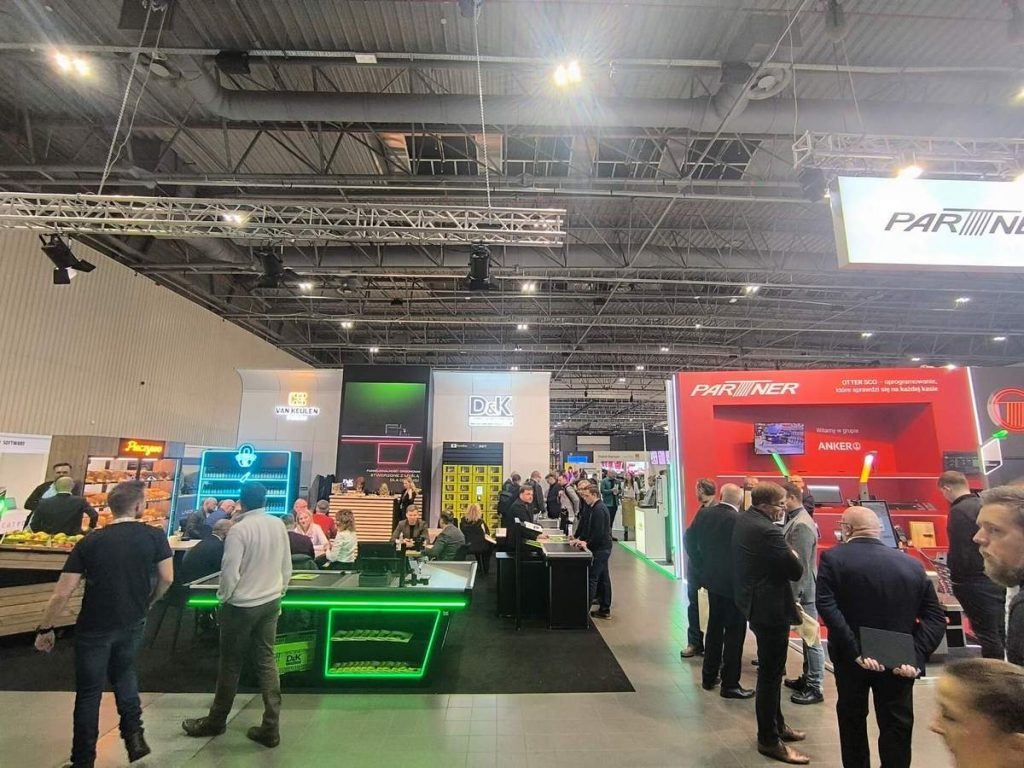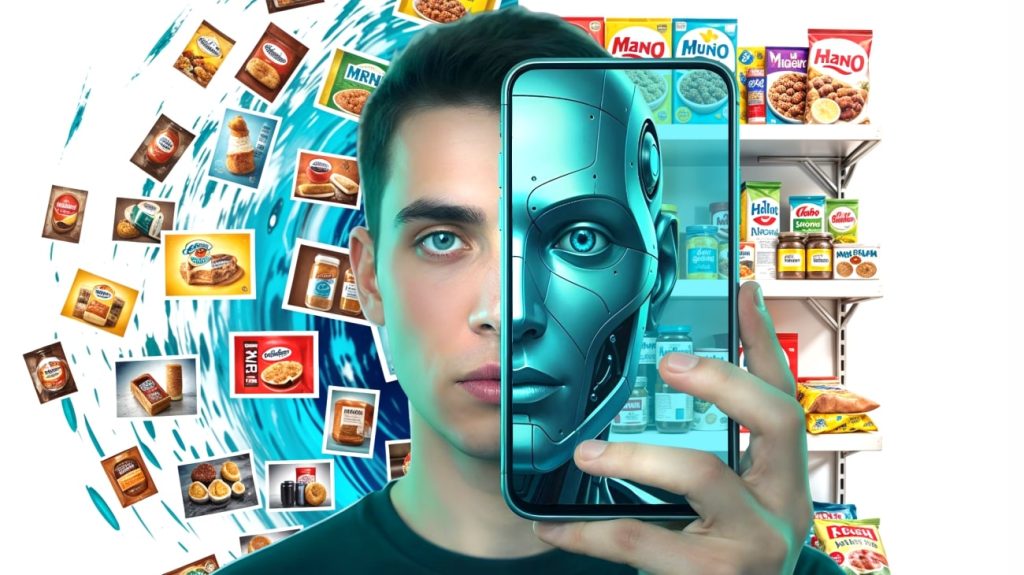iGeneration, or zoomers, are changing the FMCG industry. This is a generation that grew up in a digital world. Internet 24/7, a smartphone that is always at hand, unlimited access to information — all this has influenced the way they make purchases.
Today iGeneration holds an increasingly large share of the target audience in almost every area. According to statistics, so far a fifth of all consumers are young people of this generation. Therefore, FMCG companies, in order to win a new segment of the audience, have to reconsider promotion strategies, communication channels and the very offline interaction with customers.
This article will explore who zoomers are, where they buy and what are their areas of focus during shopping.
Table of Сontents
- Who is iGeneration?
- What iGeneration looks for when purchasing?
- Where do they buy, or is offline shopping dead?
- Keep an eye on your shelves. Try Goods Checker!
- What influences purchases?
- How FMCG companies can win iGeneration
- Building a promotion strategy with reference to the interests of iGeneration
- Keep an eye on your shelves. Try Goods Checker!
Who is iGeneration?

iGeneration, Homeland Generation or Zoomers are people who were born from the mid-1990s to the 2010s. At this time, the Internet became available everywhere. Computers, laptops, tablets, smartphones — they have had all this almost since childhood, which means that they are accustomed to the digital world and are well versed in it.
The iGeneration is often described as a more educated generation that experiences more stress compared to previous generations.
Zoomers are already cash people. They choose goods or services more consciously — they would prefer quality to quantity, but at the same time they try not to spend a lot. This is a new type of buyer that FMCG companies need to adjust to.
What iGeneration looks for when purchasing?

Sustainability
Zoomers are concerned about environmental pollution and the use of natural resources much more than previous generations. They care about the planet and its future. Therefore, they prefer brands that also make efforts in this area.
According to First Insight report, 73% of iGeneration shoppers are willing to pay 10% more for sustainable products.
It’s also worth considering that zoomers are more sensitive to brands’ positions on other issues. In a turbulent political climate, a brand may lose audience if its position does not coincide with that of young people. 23% of Zoomers admitted that they boycotted a brand for this reason.
Personalization
iGeneration appreciates personalized offers from companies. Brands should take into account the interests, preferences, habits and behavior of young people when promoting products.
Saving
iGeneration grew up in conditions of economic volatility (remember the 2008 crisis). They prefer conscious consumption, tend to choose quality over quantity, and assess the sustainability and durability of products.
Young people have more financial awareness than previous generations, so they shop wisely. Only 19% of iGenerations are willing to buy on credit, compared to 30% of millennials.
Where do they buy, or is offline shopping dead?

They say iGeneration buys more online. This is not entirely true. According to the study, today 52% of iGeneration in the US prefer to shop online, while 48% still go to brick-and-mortar stores. But the penchant for online shopping is growing. Since 2020, the number of weekly purchases made online has increased by 20%.
However, traditional retail is still relevant today. About half of iGeneration representatives prefer to buy in an offline store to avoid waiting for delivery and paying for it.
In addition, conventional stores, such as shopping malls, have become places where people can meet together, buy necessary goods, and relax. Therefore, it is too early to say that conventional retail is becoming a thing of the past. It is changing. Retailers, manufacturers and distributors now need to ensure that young people’s shopping experiences are high-quality and positive.
Keep an eye on your shelves. Try Goods Checker!
Automate shelf monitoring. Get clear analytical reports. Start your project quickly.
Leave your contacts and we will get back to you within 24 hours.
What influences purchases?

Investigation on social media and bloggers are the main factors that influence the choice.
Social media for inquiry. Zoomers make extensive use of social media, and not only for entertainment and communication. This is where they interact with brands, look for new products, examine which product is better. According to statistics, 60% of iGeneration young people search for new products on Instagram. And every year the share of social media in online sales will grow.
Bloggers to encourage. iGeneration has less faith in direct advertising (for example, on Google), not to mention advertising on television or billboards. They are more likely to listen to the opinions of bloggers on social media such as YouTube, Instagram or TikTok.
A study by Google shows that 70% of teenagers consider bloggers closer to them, so they can be trusted. Companies should consider incorporating influencers into their promotion strategy.
How FMCG companies can win iGeneration

As mentioned above, stores have become places where young people socialize, relax and shop at the same time. Therefore, today the most important thing in an offline store is the shopping experience. Especially for young people. This experience should be pleasant and positive.
High-quality display. The first thing you need to start with is to monitor the quality of the display, the availability of POS materials that will draw the attention of iGeneration. There should be no situations where a product is out of place, POS materials are missing, or price labels are mixed up. No one will look for a product on the shelf, but will just take a competitor’s product. Today there are many solutions for display monitoring, for example, Goods Checker. With these applications, retailers can sort things out on their shelves and devote more time to focusing on other aspects.
Unique offers. To create a sense of uniqueness, provide offers that will only be available when visiting an offline retail outlet. It should actually be a great deal and fair offer. iGeneration makes purchases consciously, so they should not be manipulated.
Omnichannel. Young people make purchases online and offline approximately 50/50. This means that an FMCG company needs to ensure its visibility both on the Internet and social media, and in a physical store. iGeneration can find products in conventional stores, examine them, touch or try them on, and then order them online. This also works in reverse.
Interactivity and involvement. User interaction with a brand always helps a company improve its image in the opinion of its audience. Particular attention should be paid to content created by users themselves. After all, this is the best advertising. To use this feature, you can create zones in retail outlets where customers will take pictures, test the product, and try it on. To go viral on social media, you need to come up with a hashtag and launch a contest. This will help attract young people to the store, create a community and help build loyal relationships with the audience.
Speed of service and ease of shopping. Zoomers are used to communicating through smartphones, laptops, and other gadgets. It’s easier for them to google information about a product they found in a store than to ask a sales assistant about it. Therefore, it is important that the shopping space has devices that will help young people independently handle their requests: learn more about a product or pay for a purchase.
Building a promotion strategy with reference to the interests of iGeneration

iGeneration is changing purchasing behavior. Companies should think more carefully about their positions regarding external events and ensure that their products comply with the principles of sustainable development. Otherwise, it may lose a growing audience segment.
In addition, to ensure an online visibility, it is no longer enough just to have a brand page on Facebook or Instagram; it requires interactivity. Young people should interact with the brand and receive feedback. Contests, challenges, give-away — this is just a tithe of possible interaction options. It is worth considering that today there is no clear division between online and offline, everything is becoming interconnected. FMCG companies need to be responsive to this fact. Offline sales should offer customers an atmosphere, emotions, and not just the product itself.
Today, high-quality product display, unique offers, omnichannel and customer engagement through social media are becoming strategic elements for successfully attracting and retaining this valuable audience.
Keep an eye on your shelves. Try Goods Checker!
Automate shelf monitoring. Get clear analytical reports. Start your project quickly.
Leave your contacts and we will get back to you within 24 hours.




